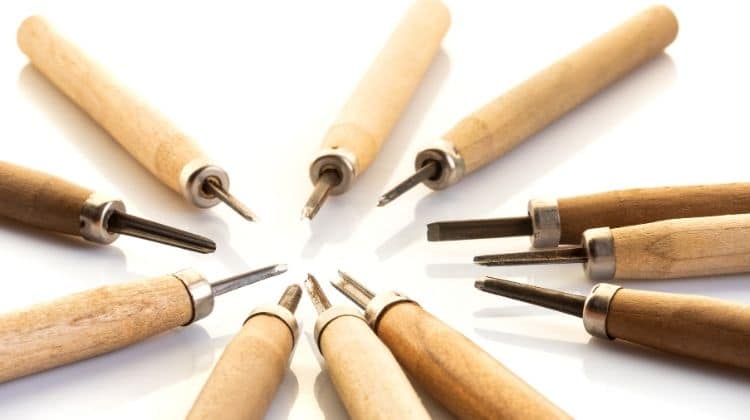So you have decided to try your hand at woodcarving? Congratulations! Wood carving is a craft that is as old as, well, wood. And as you become good at it, it can become something more than just a simple past time.
As you would expect to be successful at wood carving, you will need two things. Number one is wood to carve, and the second one is wood carving tools. There are various tools you can use to carve wood.
The question is, which tools should you start with as a beginner and which should you transition to as you improve your skill? The answer is that it depends on the carving style you choose to adopt and what you are carving.
Here are some general tips on selecting wood carving tools.
Tips on Selecting Wood Carving Tools
Start With The Basics:
When starting, you will want to start with the basic tools for carving general items such as spoons, bowls, or simple designs. Mostly these will consist of knives and gouges.
Know Your Wood:
Different types of wood may require different types of tools. Some woods are softer than others, while others are harder. Hardwoods will generally require sharper tools with a wider cutting edge.
Basic Wood Carving Tools For Beginners and Experts:
Woodcarving is an art that requires the use of several different tools. However, the main tools consist of knives and gouges. So what are some of the carving tools you need?
Knives
As you may expect, you will need something sharp to carve wood. There are several different types of knives you can use. If you are new to woodcarving, a chip carving knife will be ideal.
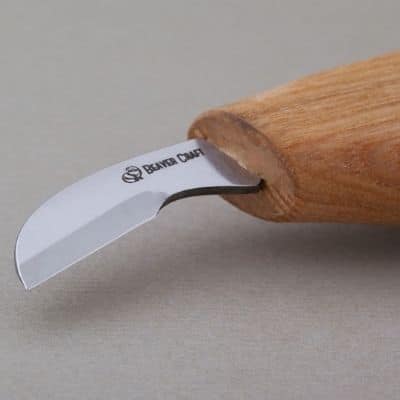
A chip carving knife can be versatile and useful. You can use this type of knife to smooth out bumpy surfaces and to make geometrical carvings. More experienced carvers may prefer a knife with a longer blade.
Bench knives
A bench knife comes in handy when you need to get up close and personal to your wood to make more intricate lines. This type of knife has a short blade of ¾ inches long or shorter. However, it has a long handle that makes it easy to grip.
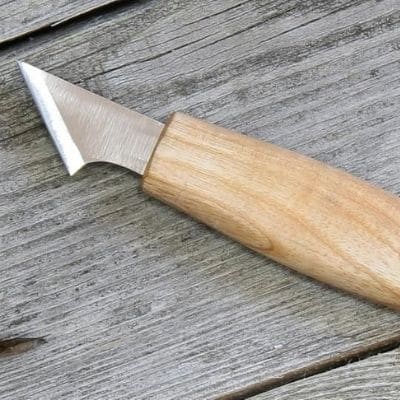
This knife helps you achieve levels of intricacy on your carving that other tools may not be able to do.
Chisels
A chisel is a must-have tool for any wood carving project. This tool typically consists of a sharp edge blade attached to a handle. It is used to take off the wood. In most cases, the chisel is used in conjunction with a mallet. You use a mallet to drive the chisel into the wood.
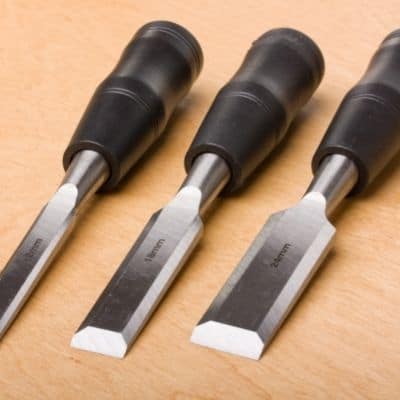
There are different types of chisel, each with a unique function.
Gouges
There are three main types of gouges, spoon gouges, v gouges, and U-gouges. However, all three do the same thing, remove little clumps of wood. A gouge will dig into a piece of wood and remove small clumps.
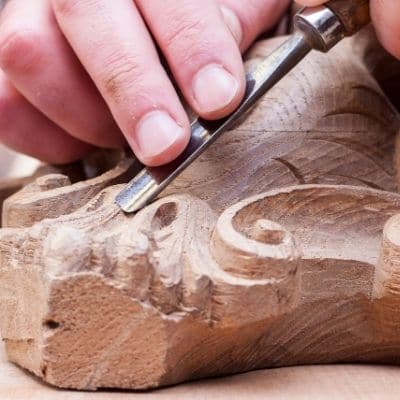
V gouges are more precise and angled than spoon gouges. For beginners, u-gouges are recommended.
Veiner
A veiner is a type of gouge with a u-shaped cutting edge. It is used for making deep round hollows or round carves. The bladed edge is typically small, with some having a diameter of 1 mm wide.
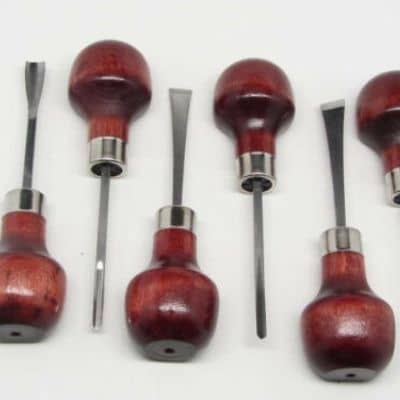
Some people consider it a type of gouge, while others consider it a separate tool. Whichever side of the divide you fall into, there is no denying its importance when wood carving.
Riffler
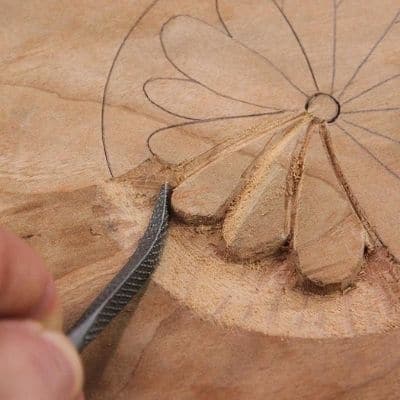
A riffler is a small file that you use to file hard to reach your carving areas to achieve your desired smoothness. It is usually double-sided tools with the handle placed in between its two filing edges.
Mallet
Already mentioned above, a mallet is used to tap onto a chisel or gouge to drive it deeper into the wood. Mallets are typically made of hardwood or plastic and have a rounded structure.
Coping saw
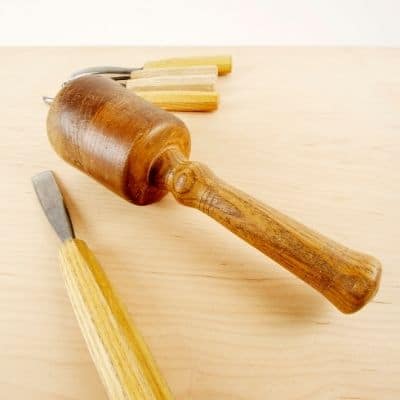
This type of saw is used to make intricate cuts that other types of saws are incapable of. Similar to the rifler, this saw can get into tight spaces making it handy for wood carving.
Fishtail
This is somewhat a gouge and a chisel, and is characterized by a cutting edge, that is broader than the shaft.
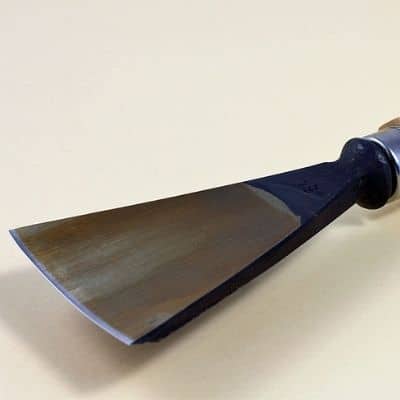
Short bent tool
Another chisel-gouge type tool is the short bent tool. The latter has a straight cutting edge with a deep curved end. It is used mainly for reaching into the corners of a wood carving pattern.
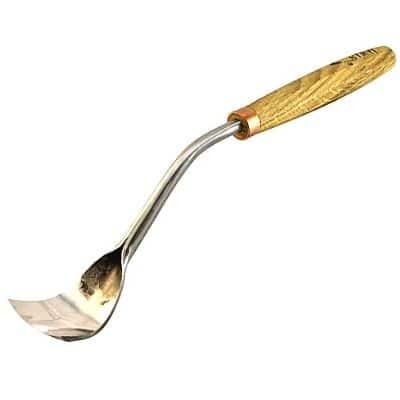
Sloyd knife
A sloyd knife is a small knife of about 5 inches that is used for whittling. The blade is typically slightly shorter than the handle.
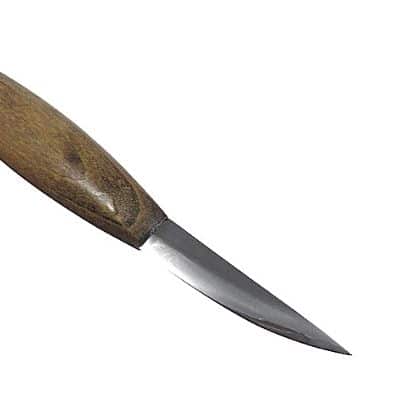
Band saws
Carving can also involve the use of power tools, bandsaws being one of them. You can use a bandsaw to cut out scrap wood. Removing scrap wood by hand or with another tool can be difficult.
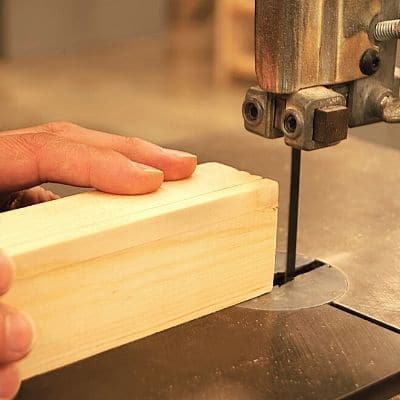
Belt sander
After a small carving, you will want to smoothen the edges. This is where a belt sander comes in. You can use it to ensure the edges of the carving are smooth.
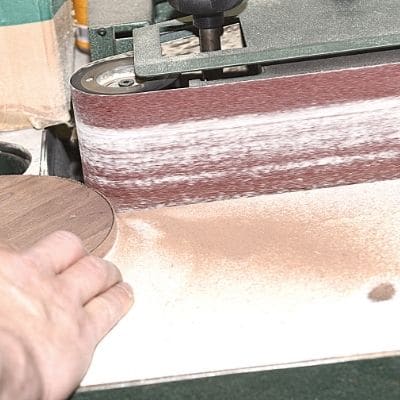
Chainsaw
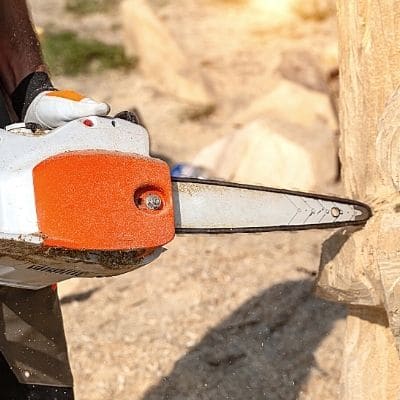
A wood carving chainsaw comes in handy when you want to make a carving out of a large block of wood. You can opt for either an electric, battery-powered, or gas chainsaw. For most indoor carving, an electric chainsaw is the best option.
Frequently Asked Question
Is it essential for beginners to wear hand gloves when using chisels and knives that have long handles?
Yes, gloves worn on the hand holding the wood being carved will protect your fingers from accidental cuts or knocks that may lead to injury.
Why Wood Carving Starter Set is the Best Solution For Beginners to Start With?
A wood carving starter set will have all the essential tools necessary for carving, most of which will consist of knives and gouges.
Does soaking wood make it easier to carve?
Not really; for dried wood, the ideal solution would be to spray the wood with a mixture of 50% water and 50% alcohol. This will be more effective than soaking it in water.
What’s the difference between whittling and carving?
While whittling is essentially a form of carving, it differs from other types of carving regarding the tools used. For whittling, you only need one tool, and the finished product often has rough edges and lacks the intricate finishing of a wood carving.
Should I carve green wood or dry wood?
For the most part, greenwood will be easier to carve than dried wood. As such, it is advisable to carve green wood as opposed to dried wood.
What is the best wood for whittling
Basswood is the best wood for whittling as it is soft and has a minimal grain to deal with
What is the best type of wood to carve a spoon?
Non-porous hardwoods such as black walnut are ideal for carving spoons.

